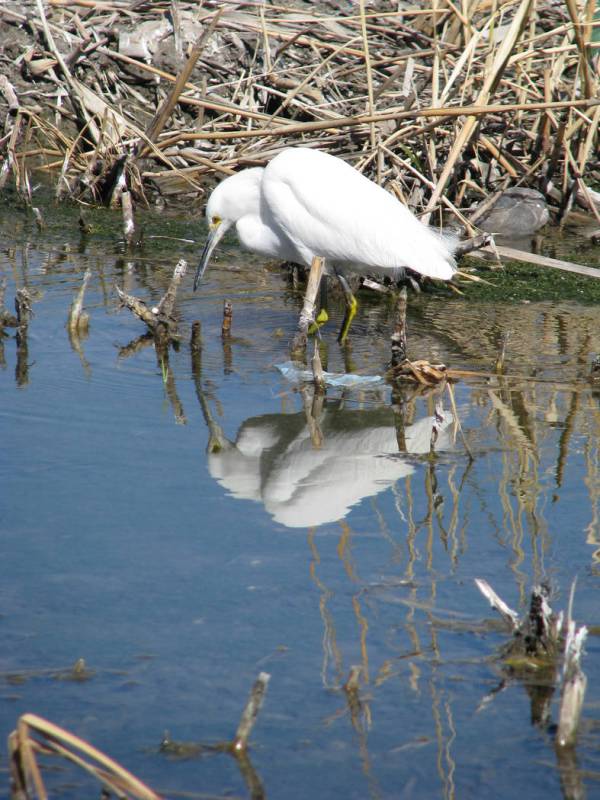Wetlands Park viewed as top bird-watching spot

By the time spring breaks rolls around, the Las Vegas Valley will be up to its eyebrows in visitors wearing bright colors, making lots of noise, showing off their breasts and getting frisky in public.
Some may even hang out long enough to make a nest and lay some eggs.
Southern Nevada, particularly Clark County Wetlands Park, is surprisingly seen as one of the country’s best bird-watching spots. The park, 7050 Wetlands Park Lane, near the east end of Tropicana Avenue, has a lot to offer migrating birds.
“It’s about 3,000 acres with the Las Vegas Wash flowing through it,” said Debbie Van Dooremolen, an environmental biologist for the Southern Nevada Water Authority. “You have water in the desert and you have vegetation that offers a variety of different habitat types.”
The emergent wetlands, the shrubs and trees of varying sizes and the shrubby desert all provide cover and forage for birds, whether they’re full-time residents or spend a good portion of the year here.
“This time of year is an interesting transition time,” Van Dooremolen said. “This is still early on, but we’re seeing quite a few birds. In April it will get really hot and heavy.”
The park is home to quail, sandpipers and killdeer. As the migration season begins, more birds can be seen in the park.
“We’ve seen over 280 different species in the park,” said Douglas Chang, president of the Red Rock Audubon Society. “We’ve seen the American white pelican, great blue heron, great egrets and snowy egrets. There are also many songbirds like the yellow-rumped warbler. There’s a lot of diversity.”
The best time to see the birds is at dawn or near sunset. One park staff member noted seeing a flock of seagulls in the park at midmorning recently.
“Typically, birds will have rested up during the night and they wake up hungry,” Chang said. “There also are the migrating songbirds, which will arrive around dawn. Larger birds like waterfowl and raptors migrate during the day, but songbirds migrate at night because they’re easy targets for predators. They’ll come down and land in places like the Wetlands Park first thing in the morning so they can hide in the trees and bushes.”
Chang also volunteers at the park at least once a month, guiding visitors on bird-watching hikes and sharing his expertise.
“Not all members of the same species look the same,” he said. “There’s a lot of variety. They look different when they’re molting; the first-year juveniles and the second-year juveniles might look different. The males and females often look very different, with completely different coloring. It’s a challenge. I like solving puzzles.”
To reach East Valley View reporter F. Andrew Taylor, email ataylor@viewnews.com or call 702-380-4532.